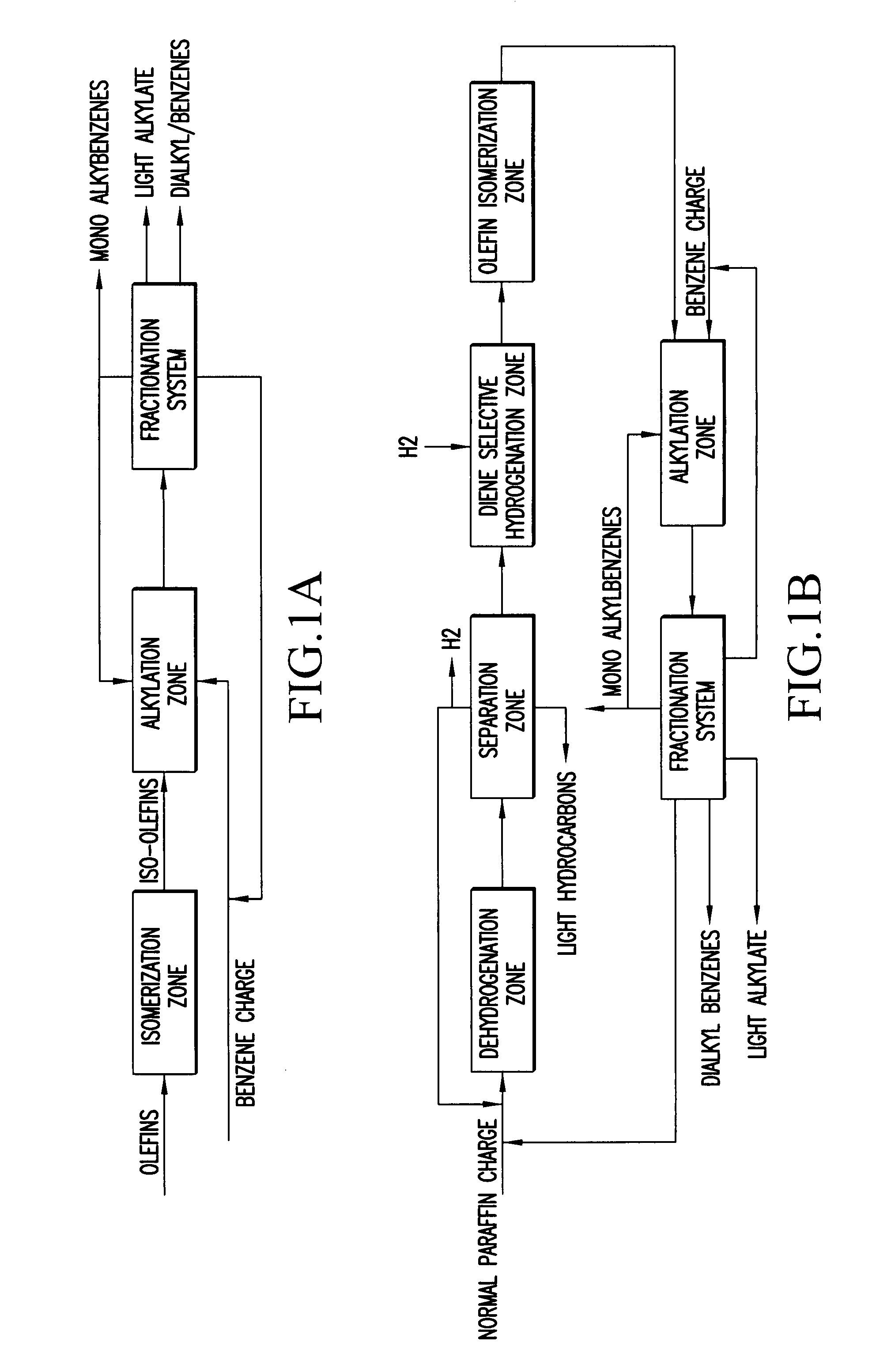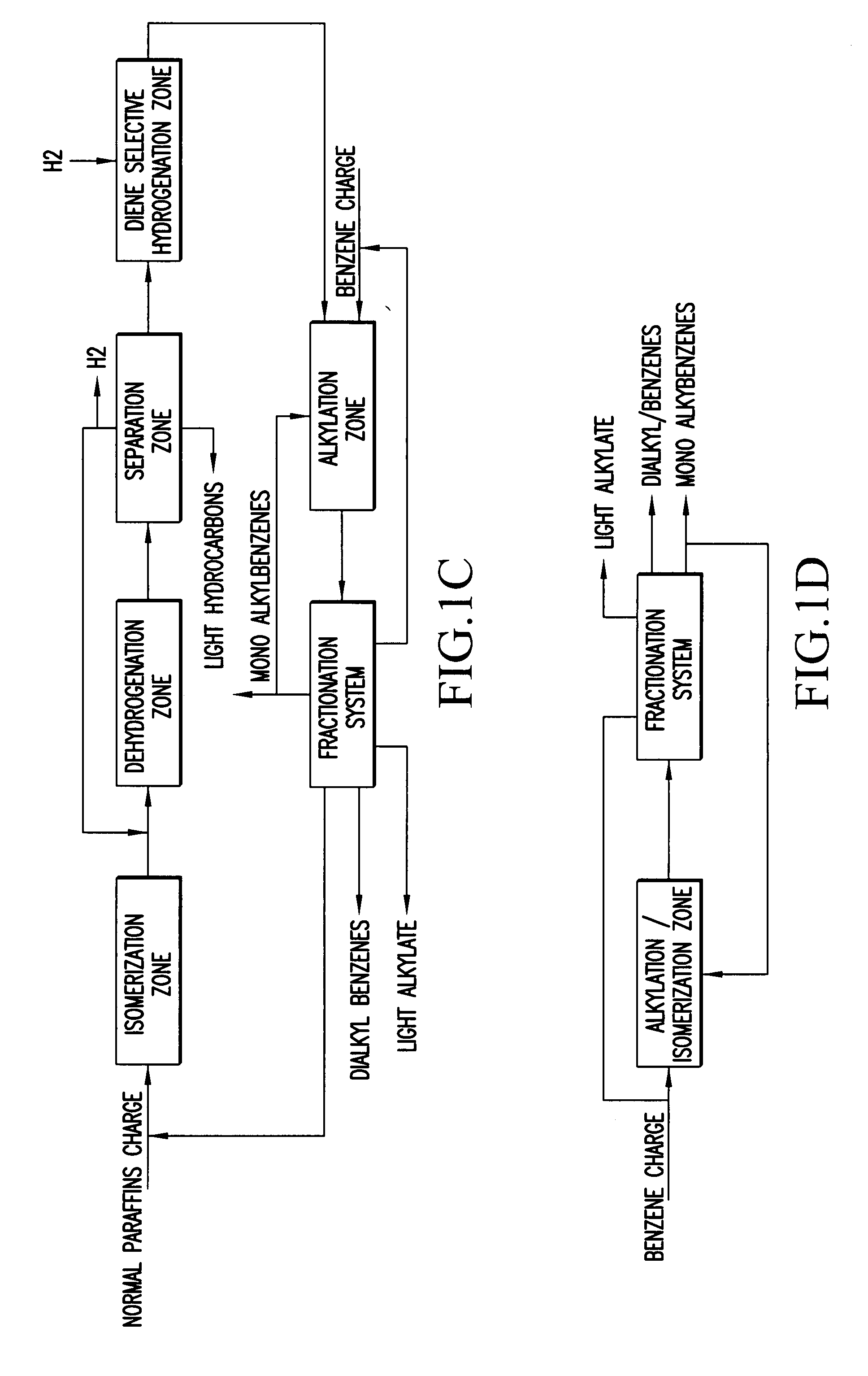Slightly branched dialkyl benzenes and related compositions
a dialkylbenzene and composition technology, applied in the direction of lubricant compositions, organic chemistry, fuels, etc., can solve the problems of system failure, poor solvency toward additives, and obvious catastrophic plugging, etc., to achieve superior low temperature properties, low volatility, and high viscometric index
- Summary
- Abstract
- Description
- Claims
- Application Information
AI Technical Summary
Benefits of technology
Problems solved by technology
Method used
Image
Examples
example 1
[0052] Benzene and dodecene sourced from Innovene (C12 alpha olefin purity of 85% and C12 branched and vinylidene olefins of 11%) are allowed to react with solid acid catalyst containing 80% mordenite-type zeolite and 20% alumina at a weight hourly space velocity (WHSV)=2 h−1 (weight of feedstock to weight of catalyst and per hour) with an inlet temperature of 210° C. The C12-based DAB products are separated from the resulting product mixture by distillation to remove mono-alkylbenzene to less than 0.5%. The C12-based DAB products are characterized by NMR and other analytical methods.
example 2
[0053] Benzene and dodecene sourced from Innovene with C12 alpha olefin purity of 85% and C12 branched and vinylidene olefins of 11% were reacted according to the same procedure / process conditions given in Example 1 with an inlet temperature of 190° C. The C12-based DAB products are isolated and characterized as described in Example 1
example 3
[0054] Tetra-decenes sourced from Mitsubishi Chemical was isomerized with zeolite catalyst to give the isomerized C14 olefins with alpha olefin purity of 4% and branched and vinylidene olefins of more than 75%. Benzene and pre-isomerized olefins are then reacted according to the same procedure / process conditions given in Example 1 with an inlet temperature of 200° C. The C14-based DAB products are isolated and characterized as described in Example 1
PUM
| Property | Measurement | Unit |
|---|---|---|
| Temperature | aaaaa | aaaaa |
| Fraction | aaaaa | aaaaa |
| Percent by mass | aaaaa | aaaaa |
Abstract
Description
Claims
Application Information
 Login to View More
Login to View More - R&D
- Intellectual Property
- Life Sciences
- Materials
- Tech Scout
- Unparalleled Data Quality
- Higher Quality Content
- 60% Fewer Hallucinations
Browse by: Latest US Patents, China's latest patents, Technical Efficacy Thesaurus, Application Domain, Technology Topic, Popular Technical Reports.
© 2025 PatSnap. All rights reserved.Legal|Privacy policy|Modern Slavery Act Transparency Statement|Sitemap|About US| Contact US: help@patsnap.com



